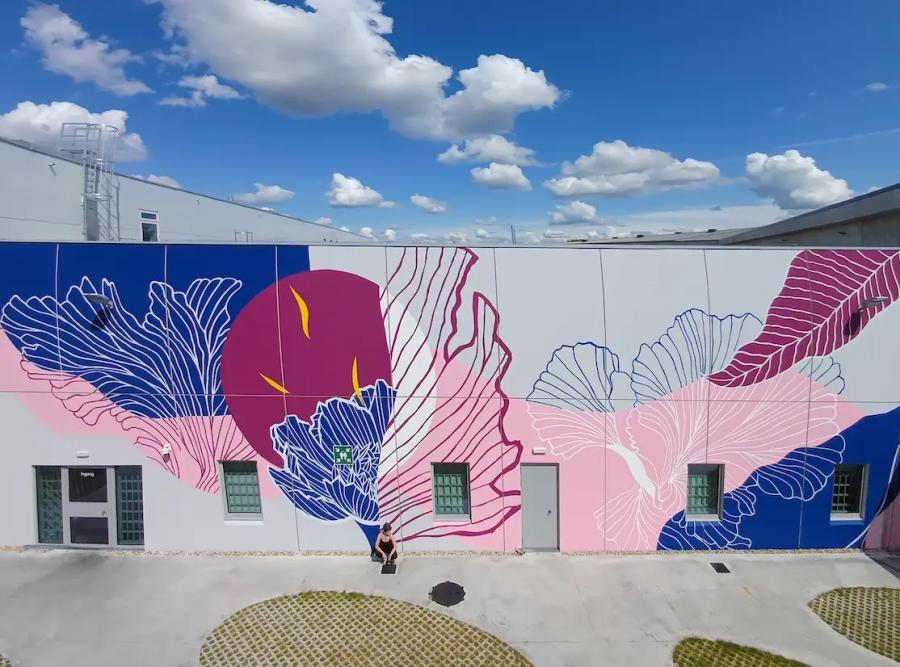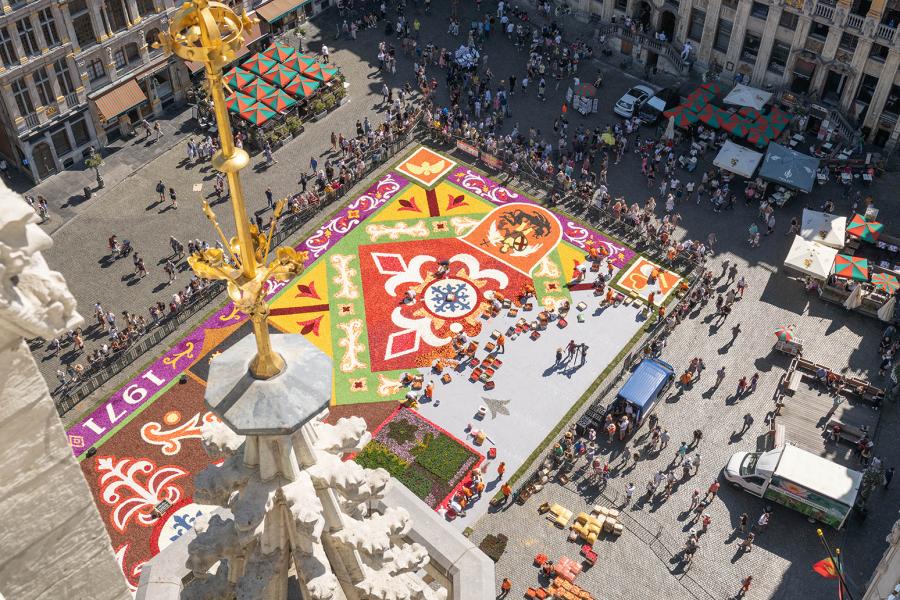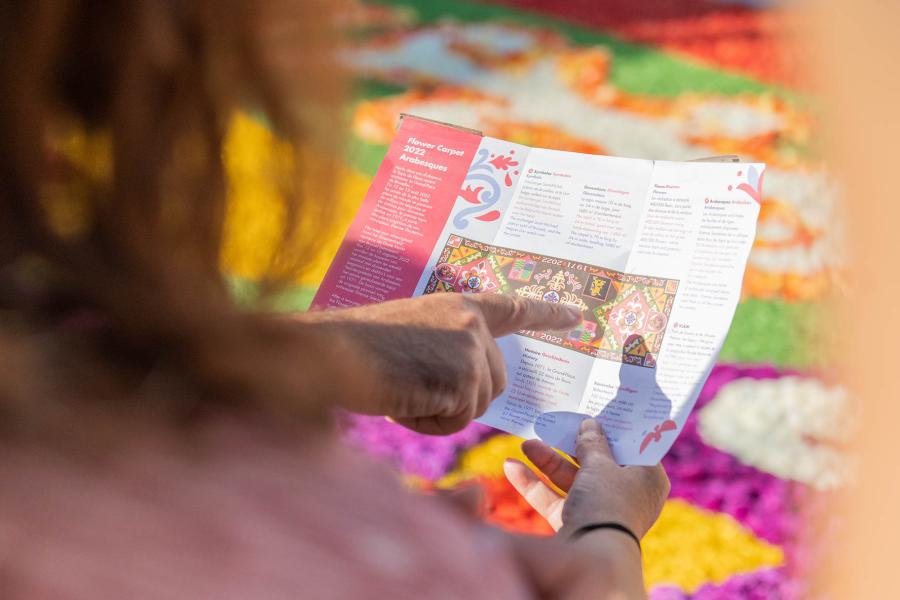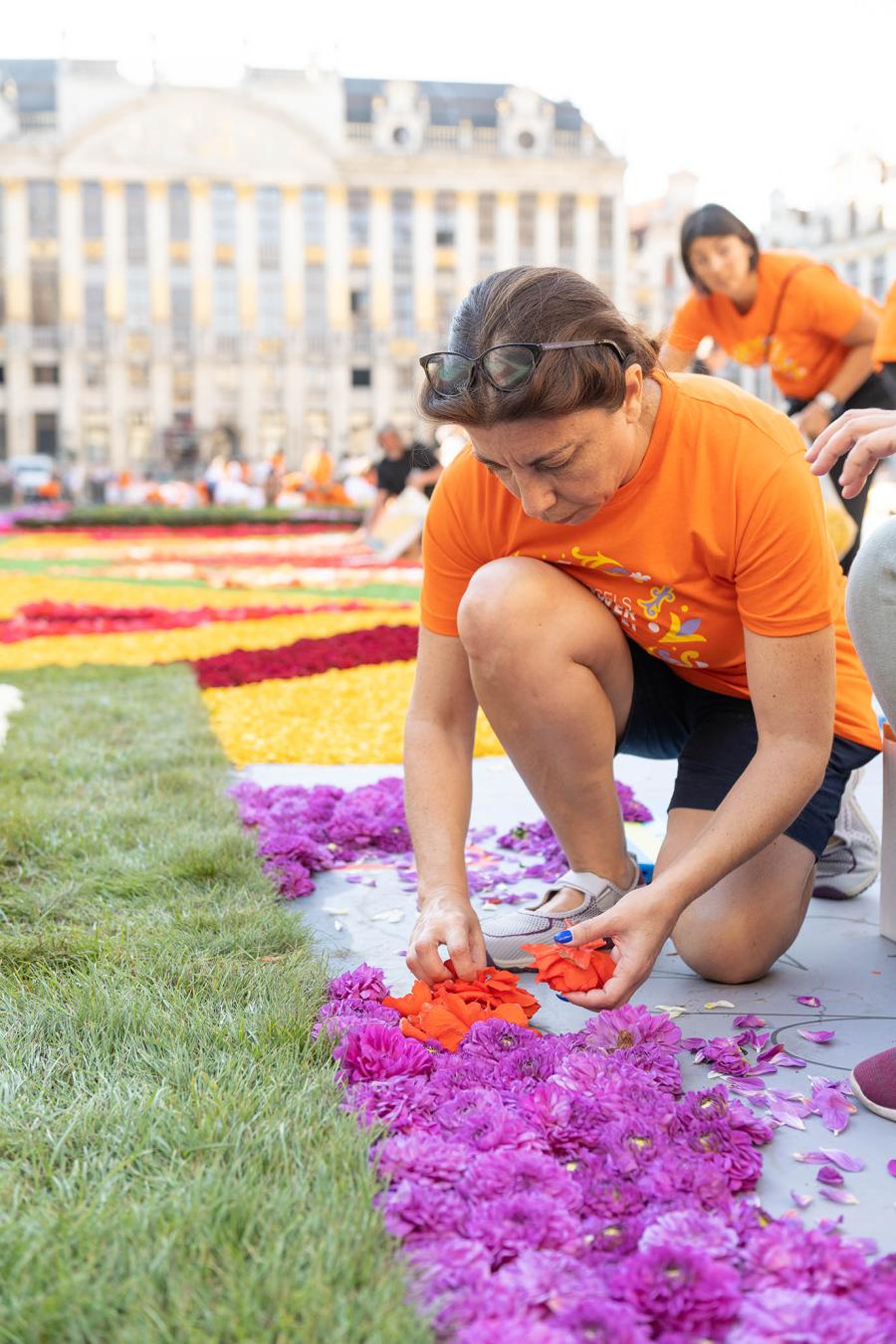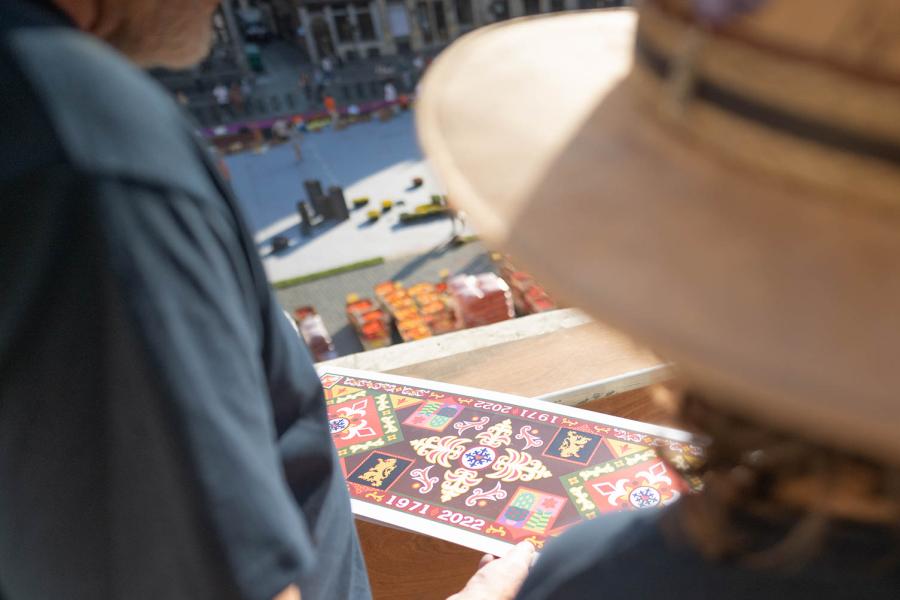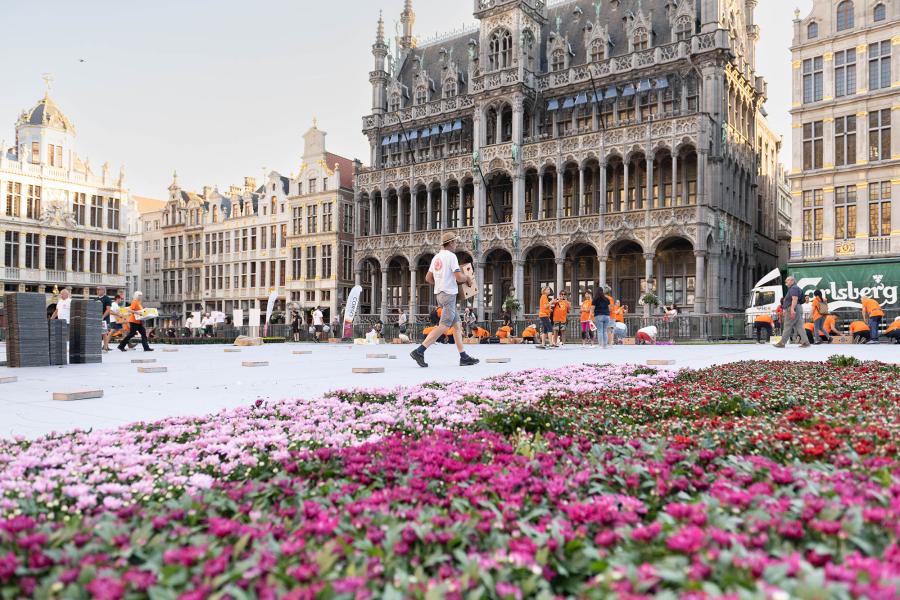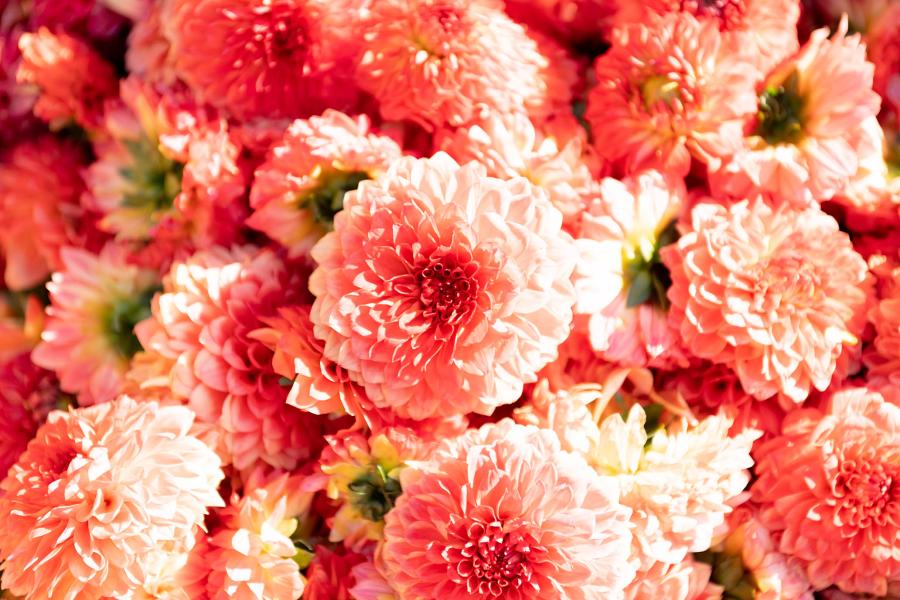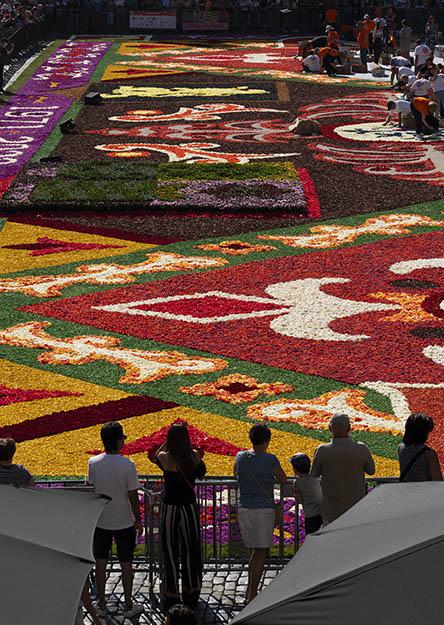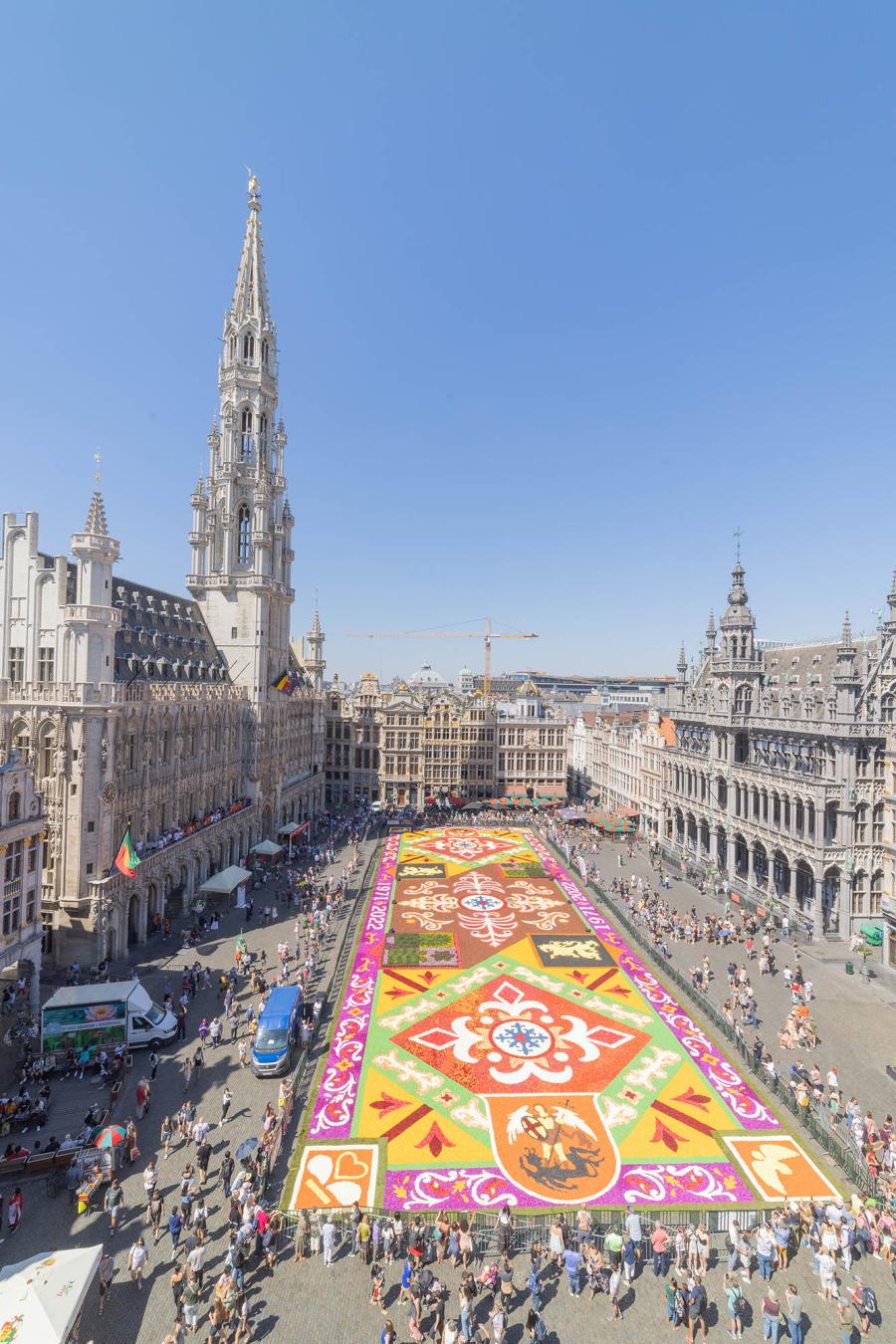Whoups, a street artist from Liège!
For the organisers, the change of flower was an ideal opportunity to rejuvenate the carpet's image, by proposing a design that departed from the usual codes of previous editions, in order to attract a new audience, while retaining its loyal followers.
Until now, the Flower Carpet motif has been linked to a cultural event, the guest country of honour or an anniversary. Rhizome has been specially and uniquely designed for the Flower Carpet. It's a nod to Brussels and Art Nouveau, as well as a tip of the hat to Street Art, youth and Surrealism.
It was designed by Océane Cornille, a street artist from Liège. After studying graphic design at the École Supérieure des Arts de Saint-Luc in Liège, Océane adopted the pseudonym 'Whoups'. She uses the movements of plants as a metaphor for human subjects.
"In my artistic approach, I draw inspiration from the concept of the plant rhizome to express the complexity and interconnectedness of Brussels. The lines in my work represent the rhizome of plants, but are also a metaphor for the urban rhizome, where neighbourhoods converge and diverge in a complex and dynamic network. Like the roots of a plant, these lines intersect one another and overlap, creating a dense, organic network that reflects the diversity and vitality of Brussels," the artist explains.



